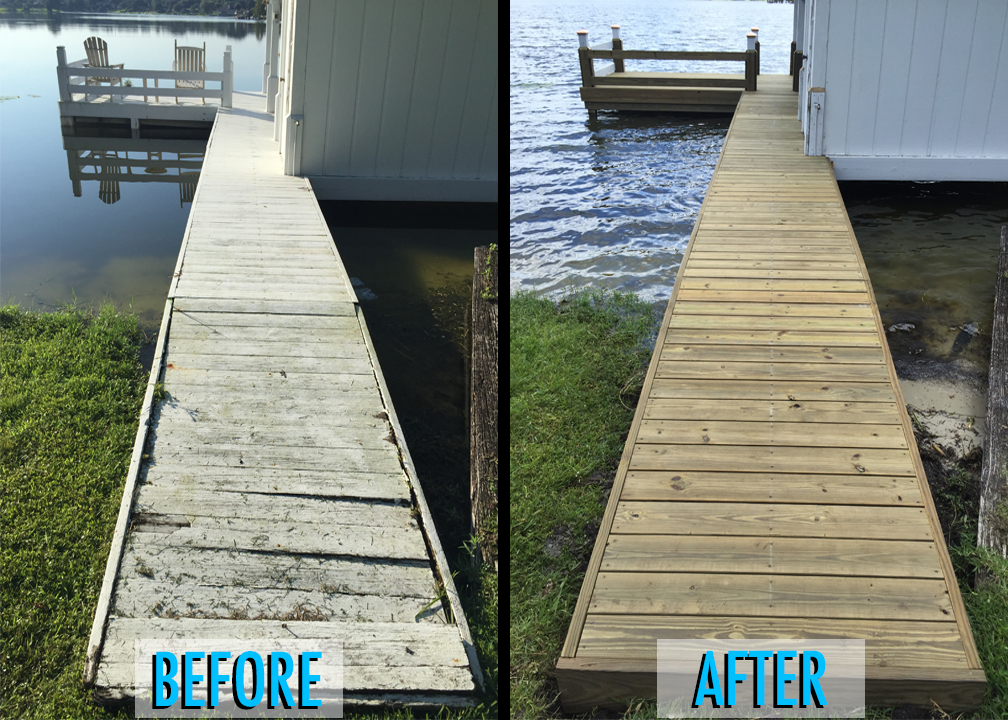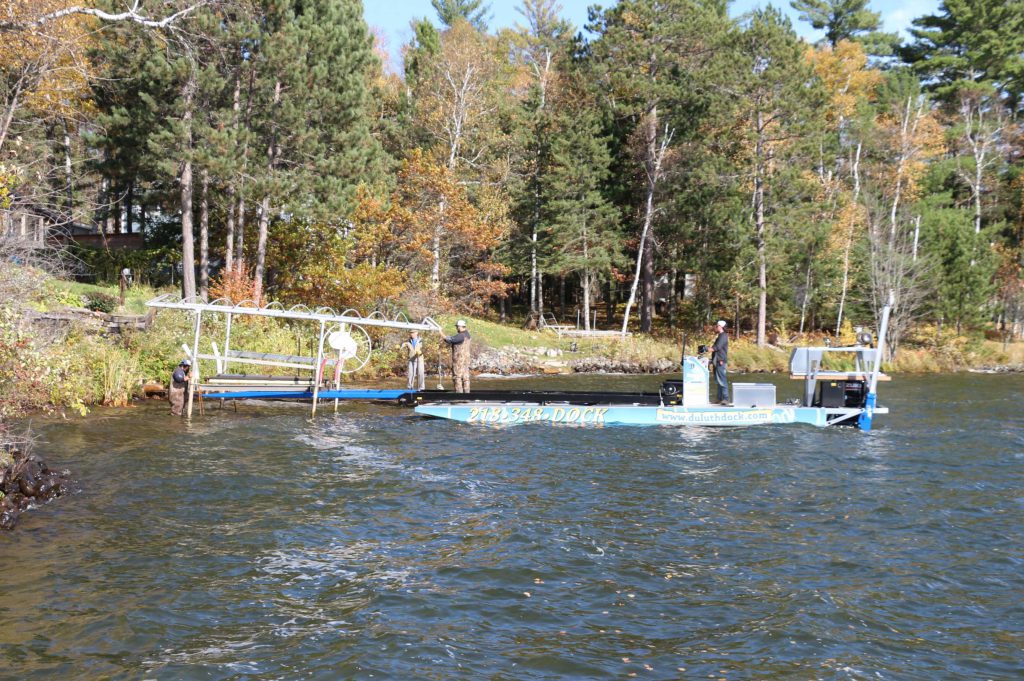Efficient Dock Repair Work Techniques: Guaranteeing Structural Honesty
Ensuring the structural honesty of docks via reliable repair work methods is critical for the long life and security of marine centers. This includes a multi-faceted method starting with comprehensive inspections using sophisticated modern technologies like sonar equipment and from another location operated automobiles (ROVs) to detect both noticeable and concealed problems. Ultimately, selecting the ideal repair products, such as composite materials and corrosion-resistant alloys, is crucial for resilience. Architectural support approaches, including the application of cross-bracing systems and load-distribution plates, play a vital role in mitigating stress and anxiety points. The significance of these methods ends up being apparent when exploring sophisticated repair work techniques and preventative maintenance strategies.
Examining Dock Damages
Evaluating dock damage is a critical initial action in ensuring the structural honesty and security of any kind of docking center. Trick aspects to examine include the dock's structure, pilings, decking, and hardware (Dock Repairs).
Structural designers or certified inspectors commonly do these analyses utilizing specialized devices and techniques. Undersea evaluations could employ sonar devices or from another location ran vehicles (ROVs) to discover submerged damage. Above water, aesthetic inspections are enhanced by utilizing dampness meters and various other diagnostic tools to uncover underlying problems not immediately noticeable to the naked eye.

Finding Repair Work Products
Choosing the suitable repair products is a crucial step in the dock restoration procedure, one that directly influences the longevity and efficiency of the repaired framework. Product option need to be driven by aspects such as ecological conditions, load-bearing demands, and compatibility with existing dock components.
In enhancement to timber, composite products are significantly popular because of their durability and reduced upkeep demands. Compounds, usually made from a mix of plastic and wood fibers, provide superb resistance to rot, pests, and UV damages. For metal anchors, choosing corrosion-resistant alloys such as galvanized steel or marine-grade aluminum is necessary to protect against corrosion and make certain structural honesty in saline water problems.
Epoxy materials and marine-grade sealants are important for repairing fractures and securing joints, offering a waterproof obstacle and boosting the dock's general toughness. By carefully picking premium materials, dock repair services can attain resilient outcomes, consequently protecting against future degradation and ensuring secure, trusted usage.
Architectural Reinforcement Methods
Effective architectural reinforcement techniques are critical in guaranteeing the stability and durability of dock repair services. One essential technique entails using steel or composite support bars (rebar) within concrete structures. Rebar supplies added tensile toughness, avoiding cracks and dispersing loads much more evenly. This technique is especially effective for docks subjected to hefty loads or severe environmental problems.
An additional crucial technique is the application of fiber-reinforced polymers (FRP) These materials provide high strength-to-weight proportions and outstanding resistance to deterioration, making them optimal for reinforcing concrete or wooden docks. FRP can be applied in sheets or strips and bonded with epoxy resins to enhance architectural honesty.
Supporting and securing systems also play an essential duty in architectural reinforcement. Cross-bracing, making use of metal or wood light beams, can neutralize side forces, lowering guiding and movement. Securing systems, such as helical piers or driven heaps, provide a secure foundation by moving loads to much deeper, a lot more stable dirt layers.
Last but not least, the combination of load-distribution plates can help distribute weight more evenly across the dock's surface area, minimizing localized stress and anxiety factors. These strategies collectively ensure that docks remain risk-free and robust, with the ability of holding up against the roughness of their operational atmosphere.
Advanced Repair Work Techniques

One more sophisticated technique entails undersea welding, which enables repair services to be conducted without the More Help requirement to dewater the area. This approach is particularly useful for resolving architectural concerns in immersed dock parts, making certain minimal interruption to procedures. Improved welding strategies, coupled with robotic systems, provide precision and dependability, thus expanding the lifespan of the dock.
Furthermore, cathodic protection systems are executed to avoid rust in metallic dock structures. By utilizing sacrificial anodes or satisfied present systems, these methods properly alleviate the electrochemical processes that cause material deterioration.
Last but not least, progressed tracking technologies, such as structural wellness monitoring (SHM) systems, offer real-time data on the problem of dock structures. These systems allow aggressive maintenance and prompt treatments, ultimately guaranteeing the lasting architectural honesty of the dock.
Maintenance and Avoidance
Upkeep and prevention are fundamental principles that underpin the long life and safety of dock structures. Normal inspections are critical, enabling early detection of damage, Discover More Here prospective weaknesses, and ecological influences. An aggressive technique, including routine checks for deterioration, rot, and structural changes, minimizes pricey fixings and extends the dock's operational life.
Precautionary procedures should consist of using protective coatings to steel components to defend against rust and making use of treated wood to stand up to degeneration. In addition, guaranteeing appropriate water drainage and air flow can avoid water accumulation, which is a typical source of architectural deterioration. Incorporating top quality products and sticking to producer guidelines during construction and repair work phases additionally play essential functions in enhancing resilience.

Educating personnel in dock upkeep best methods makes sure constant application of safety nets. Leveraging technical developments, such as drones for examinations and sensors for real-time tracking, can better boost maintenance initiatives. By prioritizing maintenance and prevention, dock owners can make sure structural honesty, operational safety and security, and cost-efficient administration over the dock's lifespan.
Conclusion
In final thought, keeping the architectural stability of marine facilities requires detailed dock repair strategies. Complete assessments utilizing advanced devices discover both noticeable and hid damages, while the selection of appropriate repair work products enhances longevity. Carrying out architectural support approaches addresses tension factors successfully. Advanced repair work methods, combined with normal upkeep practices, make certain the dock stays operational and risk-free under varied ecological problems. Adopting these strategies considerably lengthens the life-span and capability of marine framework.
Guaranteeing the architectural stability of docks with efficient repair service techniques is extremely important for the durability and safety of aquatic facilities.Selecting the appropriate repair service products is a crucial action in the dock reconstruction process, one that directly influences the long life and efficiency of the fixed framework.Reliable architectural reinforcement strategies are crucial in guaranteeing the stability and long life of dock fixings. By focusing on upkeep and prevention, dock Resources owners can make sure architectural integrity, operational safety, and economical monitoring over the dock's life expectancy.
In verdict, maintaining the structural integrity of aquatic centers necessitates detailed dock repair service techniques.
 Amanda Bearse Then & Now!
Amanda Bearse Then & Now! Melissa Joan Hart Then & Now!
Melissa Joan Hart Then & Now! Tina Majorino Then & Now!
Tina Majorino Then & Now! Dolly Parton Then & Now!
Dolly Parton Then & Now! Mike Smith Then & Now!
Mike Smith Then & Now!